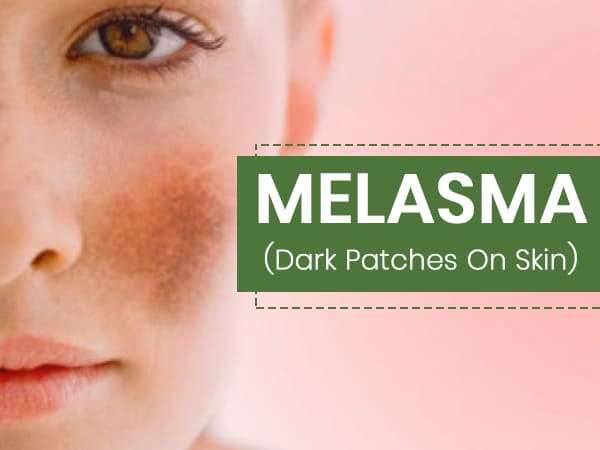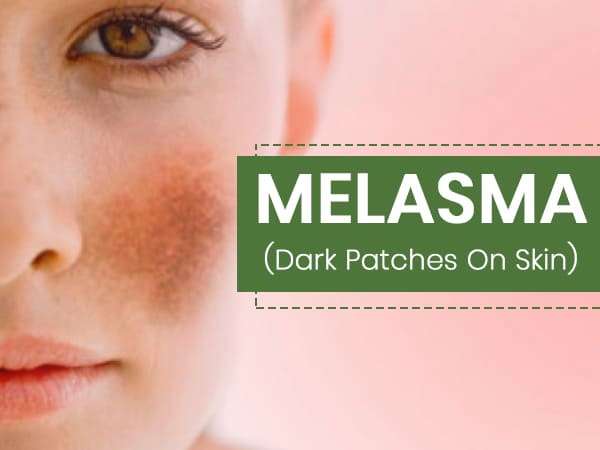Title: Understanding Melasma and Chloasma: Signs, Symptoms, Causes, Risk Factors, Diagnosis, Prevention, Diet, Lifestyle, and Homoeopathic Treatment
Introduction:
Melasma and chloasma are common skin conditions characterized by patches of dark, hyperpigmented skin. They can significantly impact a person's self-esteem and confidence. Understanding the signs, symptoms, causes, risk factors, diagnosis methods, prevention strategies, diet and lifestyle considerations, and the potential role of homoeopathic treatment is essential for effectively managing melasma and chloasma. In this blog post, we will explore the key aspects of these conditions and their holistic approach to treatment.
Signs and Symptoms of Melasma and Chloasma:
1. Hyperpigmented patches: Dark brown or gray-brown patches on the face, most commonly on the cheeks, forehead, nose, and upper lip.
2. Symmetrical appearance: Patches usually appear on both sides of the face and have a well-defined border.
3. Increased pigmentation with sun exposure: The patches may darken when exposed to sunlight.
Causes of Melasma and Chloasma:
1. Hormonal changes: Fluctuations in hormone levels, such as during pregnancy or while taking hormonal contraceptives, can trigger melasma and chloasma.
2. Sun exposure: Ultraviolet (UV) radiation from the sun can stimulate the production of melanin, leading to the development of dark patches.
3. Genetic predisposition: A family history of melasma or chloasma may increase the likelihood of developing these conditions.
4. Ethnicity: Individuals with darker skin tones, especially those of Asian, African, or Hispanic descent, are more prone to melasma and chloasma.
Risk Factors for Melasma and Chloasma:
1. Gender: Women are more likely to develop melasma and chloasma than men.
2. Hormonal factors: Pregnancy, hormonal contraceptives, and hormone replacement therapy can increase the risk.
3. Sun exposure: Excessive or prolonged sun exposure without proper protection increases the risk of developing these conditions.
Diagnosis of Melasma and Chloasma:
Melasma and chloasma can be diagnosed through a visual examination of the skin by a dermatologist or healthcare professional. In some cases, a Wood's lamp examination may be performed to assess the depth and extent of pigmentation.
Prevention Strategies, Diet, and Lifestyle Considerations:
1. Sun protection: Apply broad-spectrum sunscreen with a high sun protection factor (SPF), wear wide-brimmed hats, use sunglasses, and seek shade during peak sun hours.
2. Gentle skincare routine: Use mild cleansers and avoid harsh scrubs or abrasive products that can irritate the skin.
3. Hormonal balance: Discuss with a healthcare professional about the potential effects of hormonal changes or medications on the skin.
4. Avoid triggering factors: Limit or avoid triggers that worsen pigmentation, such as certain cosmetic products, fragrances, or harsh chemicals.
Diet and Lifestyle Considerations:
1. Antioxidant-rich diet: Consume a diet rich in fruits, vegetables, whole grains, and healthy fats to support skin health.
2. Hydration: Drink plenty of water to maintain skin hydration and overall well-being.
3. Stress management: Practice stress-reduction techniques like meditation, yoga, or engaging in hobbies to help manage hormonal fluctuations.
Homoeopathic Treatment for Melasma and Chloasma:
Homoeopathic treatment for melasma and chloasma aims to address the underlying causes, balance hormone levels, improve skin health, and reduce pigmentation. Some commonly used homoeopathic remedies for these conditions include:
1. Sepia: Indicated for melasma and chloasma associated with hormonal imbalances and irregular menstrual cycles.
2. Sulphur: Recommended for individuals with dry, scaly skin and a tendency to develop hyperpigmentation.
3. Natrum mur: Useful for melasma triggered or worsened by sun exposure.
It is important to consult a qualified homoeopathic practitioner for an accurate diagnosis and individualized treatment plan based on your specific symptoms and overall health.
Conclusion:
Melasma and chloasma can be challenging to manage, but with the right understanding and approach, it is possible to improve the appearance and minimize the impact of these conditions. By recognizing the signs, understanding the causes and risk factors, implementing preventive measures, considering a balanced diet and lifestyle, and exploring homoeopathic treatment as a complementary approach, individuals can effectively manage melasma and chloasma and promote healthy skin. Always consult healthcare professionals for an accurate diagnosis and to create a comprehensive treatment plan tailored to your specific needs.



Leave a Message